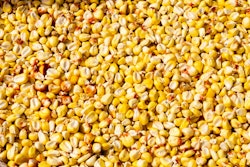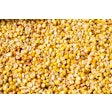
Managers of feed and grain firms need information that provides useful insights into how their organization is performing — and they need it to be current and clear. The agribusiness environment moves quickly and managers must be able to make informed, timely decisions.
Key productivity indicators (KPIs) are one way to track the performance of a feed and grain company over time. They can also be used to compare your firm to others if you have access to comparative data through an accounting firm or state feed and grain organization.
What are KPIs?
KPIs are financial ratios that are beneficial in the following ways:
- They are generally easy to calculate. The data needed come directly from your financial statements and thus do not require much time or expense to calculate.
- They facilitate making comparisons. Ratios facilitate comparisons of past performance to present performance as well as against forecast/budget levels and peer firms. Some KPIs fall into the category of “common size analysis,” a tool used to analyze financial statements by expressing key data as a percentage of a base amount (thus allowing comparison with other firms, regardless of their size).
- They are easy to understand. Not everyone is a financial “guru,” and KPI/financial ratio analysis provides information simply and clearly.
- They enhance communication. KPIs offer the ability to communicate your firm’s financial position and performance to interested outside parties, such as stockholders, cooperative patrons or investors.
What KPIs to track?
While there are numerous KPIs you might track for your company, from a manager’s perspective, there are four key criteria to monitor: profitability ratios, liquidity ratios, solvency ratios, and operating or efficiency ratios.
1. Profitability ratios
Profitability ratios are indicators that help you assess your firm’s profitability. Some of the most important profitability ratios are presented below.
Gross profit margin = gross margin/net sales
Gross profit margin can also be called the “gross margin ratio,” and it shows how much your feed and grain business has left from each dollar of net sales, after cost of goods sold — to pay operational and other business expenses — plus make a profit. Essentially, it indicates whether your business’s average markup on items is sufficient.
Return on equity (ROE) = net income after taxes/owner’s equity
This ratio is among the most widely used profitability ratio and represents the investor’s point of view of the firm. It measures return on investor ownership and is used by owners when comparing investment opportunities.
Return on assets (ROA) = net income after taxes + interest/total assets
This ratio measures net profit generated on the total investment in the business. The return to the total investment here would include not only the return to owners, but also the return to your creditor’s investment in your business. Thus, interest costs must be added to net profit. As a result, this ratio is a broader measure of profitability than ROE above. It measures net returns relative to outsider and insider investment in your firm.
2. Liquidity ratios
Liquidity refers to the ability of your company to meet financial obligations as they come due. It is possible for a firm to be making a profit and have a strong owner’s equity position in relation to total assets and still be so starved for available cash that it is unable to take advantage of discounts or quantity buying, meet emergencies or even pay bills. Liquidity is an area of fundamental concern for managers.
Current ratio = total current assets/total current liabilities
The current ratio is probably the most popular liquidity ratio. In most cases, a current ratio somewhere around 2 signifies ample liquidity for your feed and grain company.
Quick ratio = (total current assets – inventory)/total current liabilities
Some financial analysts feel the current ratio has limitations — as the need to quickly liquidate inventories, accounts receivable, marketable securities, etc. to raise cash may result in a sharp decrease in their value — impacting the firm’s ability to cover short-term obligations. The quick ratio helps to address these concerns. For most firms, a quick ratio between 0.8 and 1 signifies sufficient strength in liquidity.
3. Solvency ratios
A third challenge for managers is keeping your company solvent. Solvency is related primarily to a firm’s ability to meet all of its financial obligations over the long run or cover total liabilities. Solvency ratios identify the portions of a business’s capital requirements that are being furnished by owners and by lenders. Evaluation of these ratios gives an indication of the likelihood that lenders will incur problems in recovering the money they have loaned to the business. These ratios can also indicate when a firm should consider borrowing more of its capital needs, with a consequent opportunity for increasing return on its owners’ investment (the principle of using someone else’s money to increase the return on your investment!).
Debt-to-equity ratio = total liabilities/owner’s equity
The debt-to-equity ratio indicates the relationship of your company’s owner’s equity to the total liabilities of your firm. Lenders tend to get nervous when their investment is greater than that of owners, which would result in a debt-to-equity ratio greater than 1. In fact, many lenders require this 1:1 ratio as the absolute upper limit. While balancing this ratio appropriately is important, a lower ratio might allow the firm to achieve “preferred customer” status with a lender and potentially receive lower interest rates in the process, as your lender may view your firm as a good credit risk.
Debt-to-asset ratio = total liabilities/total assets
The debt-to-asset ratio is used to determine the proportion lenders are contributing to the total capital of the firm. Note that this ratio conveys the same information as the debt-to-equity ratio (due to the accounting equation where total assets = liabilities (what the firm owes) + owner’s equity (what the owners own) ). Both ratios are used to assess the solvency position of a firm. The upper limit lenders assign to this ratio is usually 0.5 or less, which corresponds to a 1-to-1 upper limit for the debt-to-equity ratio. At 50%, outsiders and insiders have equal investment in the firm.
4. Efficiency ratios
These ratios are tailored to fit specific businesses. In the case of feed and grain operations, many companies track the throughput of the number of bushels of grain moved through the facility (a mathematical calculation of bushels/month or bushels/year). Others might include:
Asset turnover ratio = net sales/total assets
The asset turnover ratio can be used to determine the intensity with which your firm’s assets are used, as measured by the number of times assets “turn over” in a period. A recommended asset turnover number is difficult to state. A larger number is better than a smaller one, but a target number will depend on the characteristics of the business. A firm that is almost all grain handling and storage will differ from a firm that is almost all animal feed manufacturing. Tracking this number over time allows you to measure historical trends that help signal when interventions may be in order.
Inventory turnover = cost of goods sold/ending inventory
A similar, yet more specific, measure of efficiency is focused on inventory. A significant portion of a firm’s assets may be tied up in inventory. The rate of inventory turnover indicates how successfully this important part of working capital has been managed. If too much working capital is being tied up in inventory, either sales are too low or inventory management is poor. Poor inventory management can bring higher interest expense if short-term financing is being used to finance the inventory. Alternatively, a high rate of inventory turnover could indicate lost opportunity for sales because of stock-out conditions or inability to meet delivery requirements.
Days sales in accounts receivable = (accounts receivable/net sales) x 365 days
Another measure of efficiency is found in the average collection period of your account receivables (AR). An extended period for collection of AR could indicate lower profits because of added collection costs, interest on funds needed to support the accounts receivable and bad-debt losses. On the other hand, too low a figure could indicate an overly strict credit policy, leading to lost sales.
Wage efficiency ratio = labor costs/net sales
Labor costs typically represent the largest proportion of a feed and grain firm’s operating costs, and ensuring these costs are well managed is essential to profitable operation. The wage efficiency ratio is an important way to track labor costs. Two other popular efficiency ratios are sales per square foot and administrative costs per dollar of sales. You can identify the most important areas of your business where efficiency ratios would provide important managerial information.
Creating the dashboard
Many businesses find several KPIs useful. These ratios can be used in two ways to gain important insight:
- By comparing to the same ratio in previous periods (this allows for measurement against a predetermined goal, or to look at movement in the “right direction”).
- By comparing to other similar firms. A spreadsheet can be used to track and graph these KPIs over time and/or against comparative firm information — to create a dashboard for your feed and grain business.
Utilizing KPIs with financial ratios can provide the important insights needed to achieve your and your board's goals for your grain and feed business. KPIs can also assist your bank and others with understanding the business's performance. In today’s fast-moving agribusiness world, feed and grain managers need the information a thoughtfully constructed KPI dashboard can provide.
Dr. John Foltz is professor emeritus, The Ohio State University, Columbus, Ohio, and dean emeritus, College of Agricultural and Life Sciences and Professor, University of Idaho, Moscow, Idaho. Dr. Jay Akridge is trustee chair in teaching and learning excellence and professor, Department of Agricultural Economics, and provost emeritus at Purdue University.


















